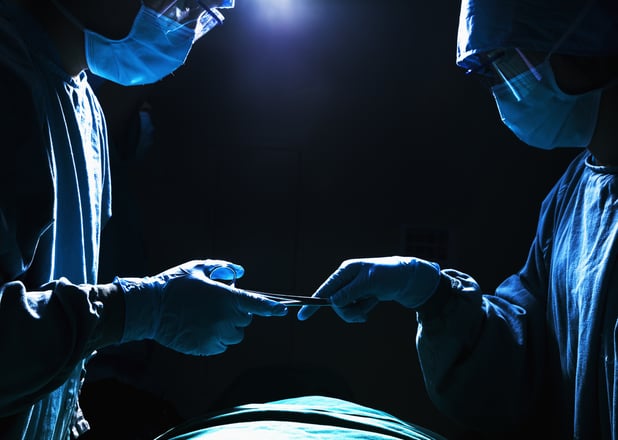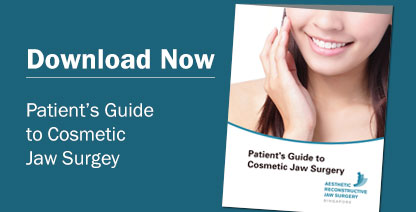Share this
Corrective jaw surgery for the middle-age patient
on May 19, 2017

Most patients for corrective jaw surgery are teenagers or young adults. It is often at this age that the patient is aware of the problem and seeks treatment. The motivation for seeking surgery is usually a combination of functional problems and aesthetics. However, increasingly, I am seeing more middle-aged patients. Are these “older” patients suitable for such surgery?
Why now?
Dentofacial deformities usually become obvious from adolescence. Most of the older patients would have already noticed their jaw deformities since young. Why did they not have it done when young and choose instead to wait till their much older? There is a wide variety of reasons.
- Not interested
Some were just not interested when they were young. They might have some functional deficit but were able to adapt. They might also not have been concern about their appearance and hence the deformities did not bother them. The type of deformity matters. In Singapore, with the exception of the underbite, many types of deformities are well tolerated by patients. Motivation to undergo surgery to correct deformities such as overbite, open bite, jaw asymmetry and gummy smile is generally not strong.
- Not aware of treatment
Before the advent of the internet, not much information is available to the general public about jaw surgery. Even if the patient was affected functionally and aesthetically, they might not know that it could be treated and certainly did not know who to go to for treatment. The number of oral maxillofacial surgeons in Singapore was small and there were little publicity.
- Fear of surgery
Corrective jaw surgery is a fairly involved surgery and patients were rightfully fearful. Furthermore, 20-30 years ago, orthognathic surgery was still not very commonly done in Singapore and the chances of a patient having friends who had undergone such surgeries was slim. The lack of information added to the generic fear of surgery.
- Parental objection
Young patients are dependent on their parents for consent for surgery. Many parents fear surgery for their kids even more than the patients themselves. Even young adults of legal age of consent often seek their parents approval for surgery. This is still prevalent today. Parents may object to surgery, due to the fear of potential complications or misunderstanding of orthognathic surgery as purely cosmetic surgery.
- Financial constraints
Corrective jaw surgery is rather expensive. Younger patients have less financial resources and may not be able to afford treatment.
- Time constraint
Younger patients are less in control of their time. When in school, they were subjected to schedule of the school. Even after starting work, as a junior staff member, they also have less latitude to take leave for elective surgery.
The middle-aged patient would have overcome most of the above constraints. Some conditions which did were not a concern with them when they were younger might begin to as they age. It may be due to deteriorating function due to the jaw deformity or their decreasing ability to adapt. Some may be considering rejuvenating cosmetic surgery and begin to see their jaw disharmony in a different light. The ubiquitous internet puts infinite information at their finger tips and they are more aware and more resourceful than before.
However, surgery in older patients does pose additional risks.
- Medical history
Some chronic illnesses may surface in middle age. Hypertension, diabetes, hypercholesterolemia, etc may complicate surgery. These medically compromised patients will need to have their medical conditions stabilized and managed prior to any elective surgery. Intraoperative and postoperative management is also more intense to avoid any complication from their medications and conditions.
- Dental history
Chronic periodontal disease could also have developed by middle age if oral hygiene maintenance had not been optimal. Some teeth may also lost or heavily restored. This can complicate the alignment of the jaw positions as well as stability of the results.
- Healing capability
Older patients also have reduced healing ability. Orthognathic surgery involves cutting up the jaw bones and repositioning the segments into ideal positions and then fixing them with plates and screws. Thereafter, it is dependent on the bone to heal themselves. If the healing ability is reduced, the bone healing may be prolonged and more prone to infection.
- Recovery process
Beyond wound healing, general recovery from surgeryand general anesthesia tend to take a slightly longer time for older patients.
- Orthodontic response
Orthognathic surgery usually entails orthodontic treatment. For the older patient, the jaw bone may respond slower to orthodontic forces, resulting in longer orthodontic treatment period.
Is the middle age patient suitable for orthognathic surgery? Like any elective surgery, if there are confounding factors such as a compromising medical and dental history, they must be controlled first. The patient should also understand that postoperative recovery is also likely to be more protracted than a younger patient. With good control of any medical condition and an informed understanding of the risks and benefits of corrective jaw surgery, a middle age patient can be a good candidate for surgery.
Share this
- Jaw Surgery (93)
- Dental Implants Singapore (90)
- Orthognathic Surgery (48)
- Replacing Missing Teeth (26)
- Missing Teeth Options (23)
- Underbite (23)
- Bone Grafting (21)
- Costs (18)
- Facial Aesthetics (18)
- Aesthetics (17)
- dental implants (16)
- corrective jaw surgery (15)
- BOTOX (11)
- Dermal Fillers (11)
- Wisdom teeth (10)
- Fixed Implant Dentures (8)
- Loose Dentures Singapore (6)
- Medisave (6)
- sleep apnea (6)
- Braces (5)
- Dental Pain (5)
- Dentures in Singapore (5)
- Loose Teeth (5)
- Tooth Extraction (5)
- jaw deformities (5)
- bimax (4)
- bone graft (4)
- maxillomandibular advancement (4)
- all-on-4 (3)
- bimaxillary protrusion (3)
- chin implant (3)
- facial asymmetry (3)
- full mouth dental implants (3)
- genioplasty (3)
- immediate implant (3)
- removal of an integrated dental implant (3)
- third molars (3)
- wisdom tooth surgery (3)
- My Dentures Don't Fit (2)
- VME (2)
- bone graft healing (2)
- distraction osteogenesis (2)
- medical tourism (2)
- obstructive sleep apnea (2)
- orthodontics (2)
- plastic surgery (2)
- CT guided dental implants (1)
- Double jaw surgery (1)
- Invisalign (1)
- Periodontal Disease (1)
- Permanent Dentures Singapore (1)
- before and after photos (1)
- facial trauma (1)
- fractured dental implant (1)
- oral appliance therapy (1)
- root canal treatment (1)
- veneers (1)
- vertical maxillary excess (1)
- September 2019 (2)
- July 2019 (2)
- May 2019 (2)
- August 2018 (1)
- October 2017 (1)
- September 2017 (2)
- August 2017 (1)
- June 2017 (2)
- May 2017 (4)
- April 2017 (1)
- March 2017 (1)
- February 2017 (3)
- January 2017 (3)
- December 2016 (1)
- November 2016 (2)
- October 2016 (4)
- September 2016 (9)
- August 2016 (5)
- July 2016 (11)
- June 2016 (14)
- May 2016 (6)
- April 2016 (2)
- March 2016 (1)
- January 2016 (7)
- December 2015 (10)
- November 2015 (4)
- October 2015 (9)
- September 2015 (7)
- August 2015 (1)
- July 2015 (6)
- June 2015 (3)
- May 2015 (7)
- April 2015 (5)
- March 2015 (8)
- January 2015 (5)
- December 2014 (7)
- November 2014 (7)
- October 2014 (6)
- September 2014 (8)
- August 2014 (5)
- July 2014 (7)
- June 2014 (8)
- May 2014 (9)
- April 2014 (10)
- March 2014 (6)
- February 2014 (8)
- January 2014 (3)
Subscribe by email
Email subscription




Comments (1)